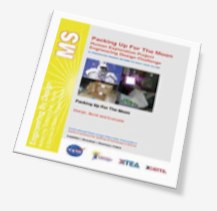 A lunar eclipse occurs when the moon passes behind Earth so that Earth blocks the sun’s rays from striking the moon. This can occur only when the sun, Earth and moon are aligned exactly, or very closely, with Earth in the middle. Hence, there is always a full moon the night of a lunar eclipse.
A lunar eclipse occurs when the moon passes behind Earth so that Earth blocks the sun’s rays from striking the moon. This can occur only when the sun, Earth and moon are aligned exactly, or very closely, with Earth in the middle. Hence, there is always a full moon the night of a lunar eclipse.Unlike a solar eclipse, which can only be viewed in a relatively small area on Earth, a lunar eclipse can be seen by anyone on the night side of Earth. A lunar eclipse lasts for a few hours, whereas a total solar eclipse lasts for only a few minutes at any given place. Some lunar eclipses have been associated with important historical events.
In this NASA Now program, astronomer Steven Edberg from the Jet Propulsion Laboratory in Pasadena, Calif., shines some light on the science behind lunar eclipses.
Link to the NES Virtual Campus home page.
NASA Now Minute: Total Lunar Eclipse

 Do you want to learn how NASA Explorer Schools educator April Bidwell’s class at Wewahitchka Elementary School turned the Lunar Plant Growth Chamber into a full classroom experiment?
Do you want to learn how NASA Explorer Schools educator April Bidwell’s class at Wewahitchka Elementary School turned the Lunar Plant Growth Chamber into a full classroom experiment?